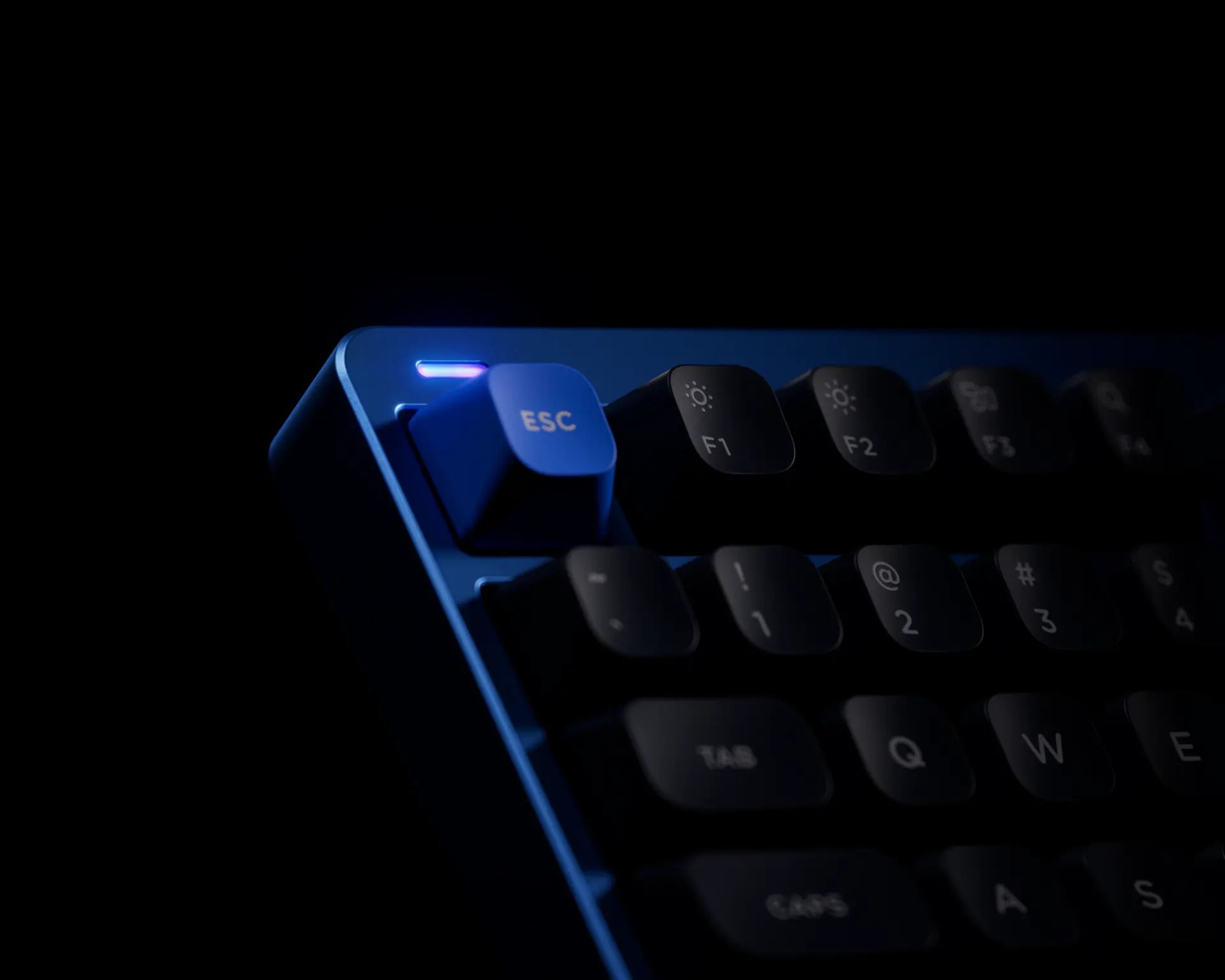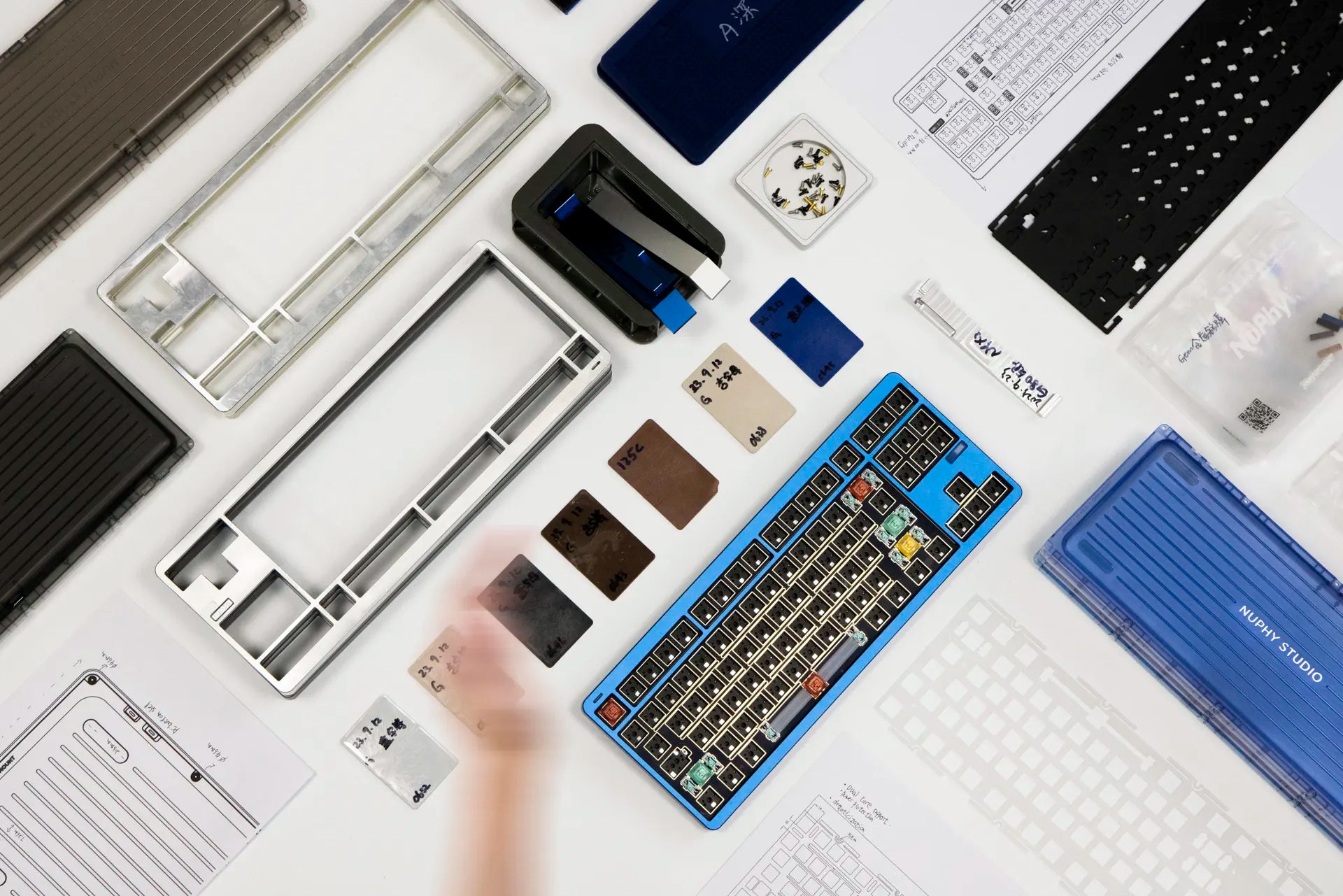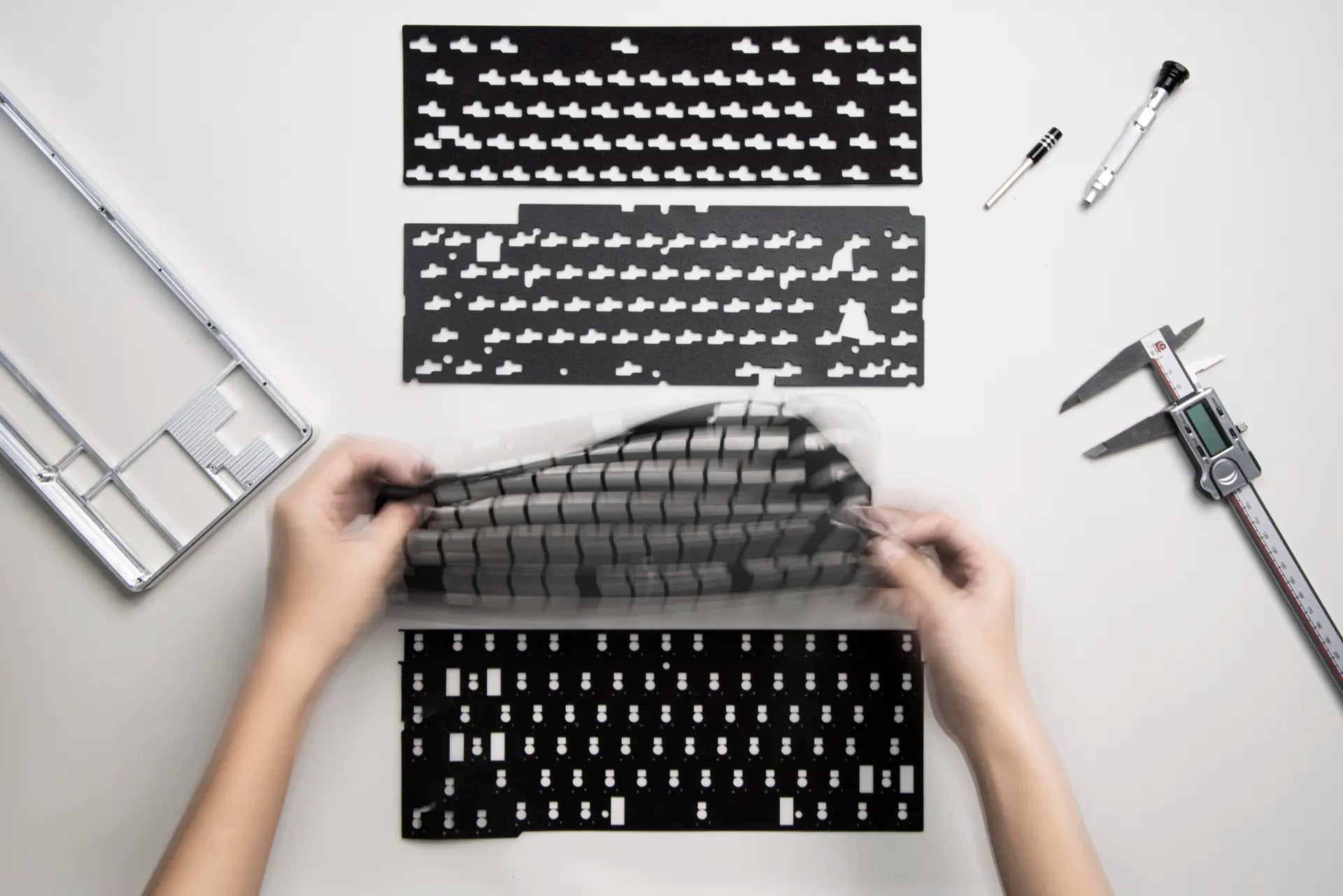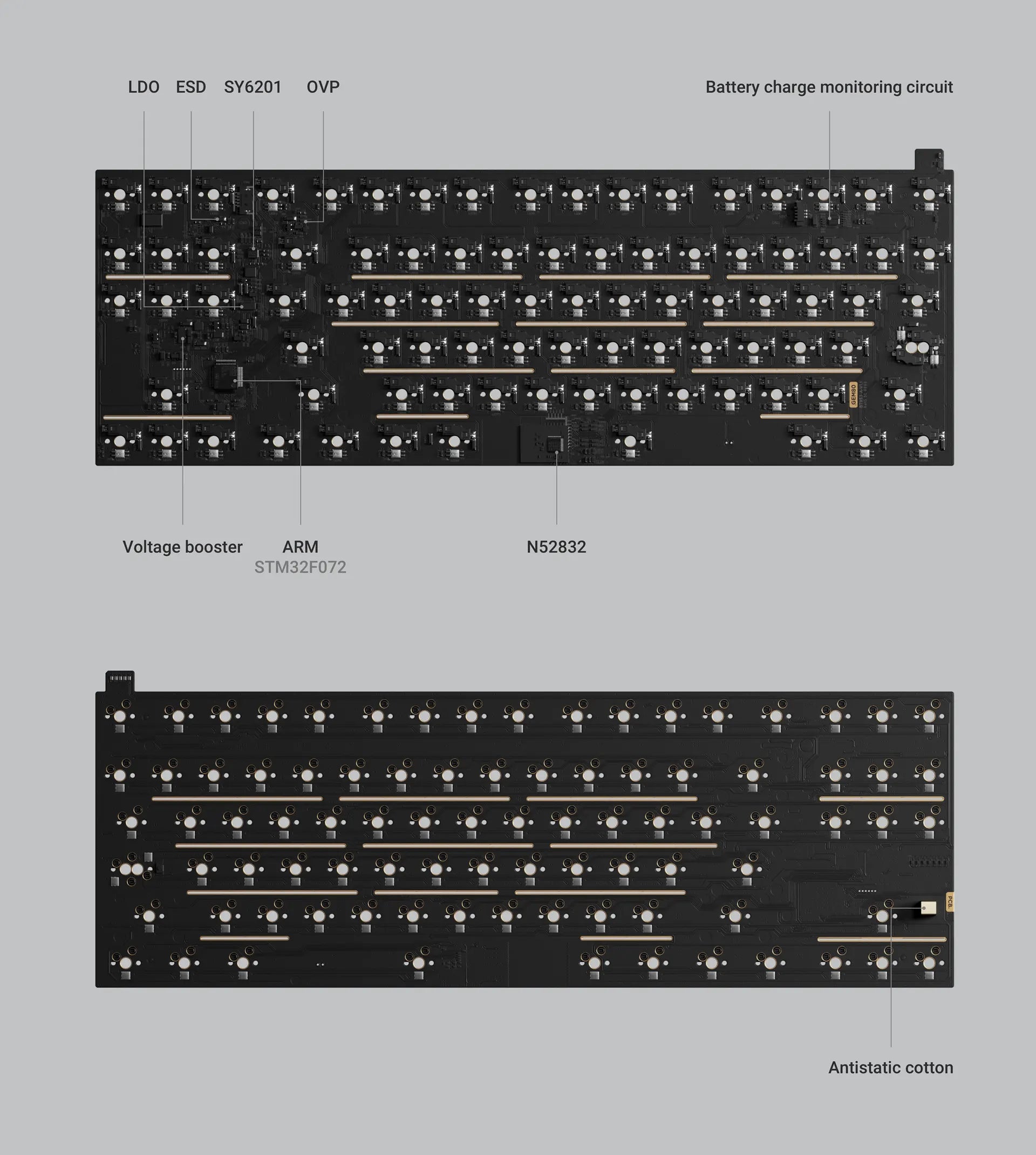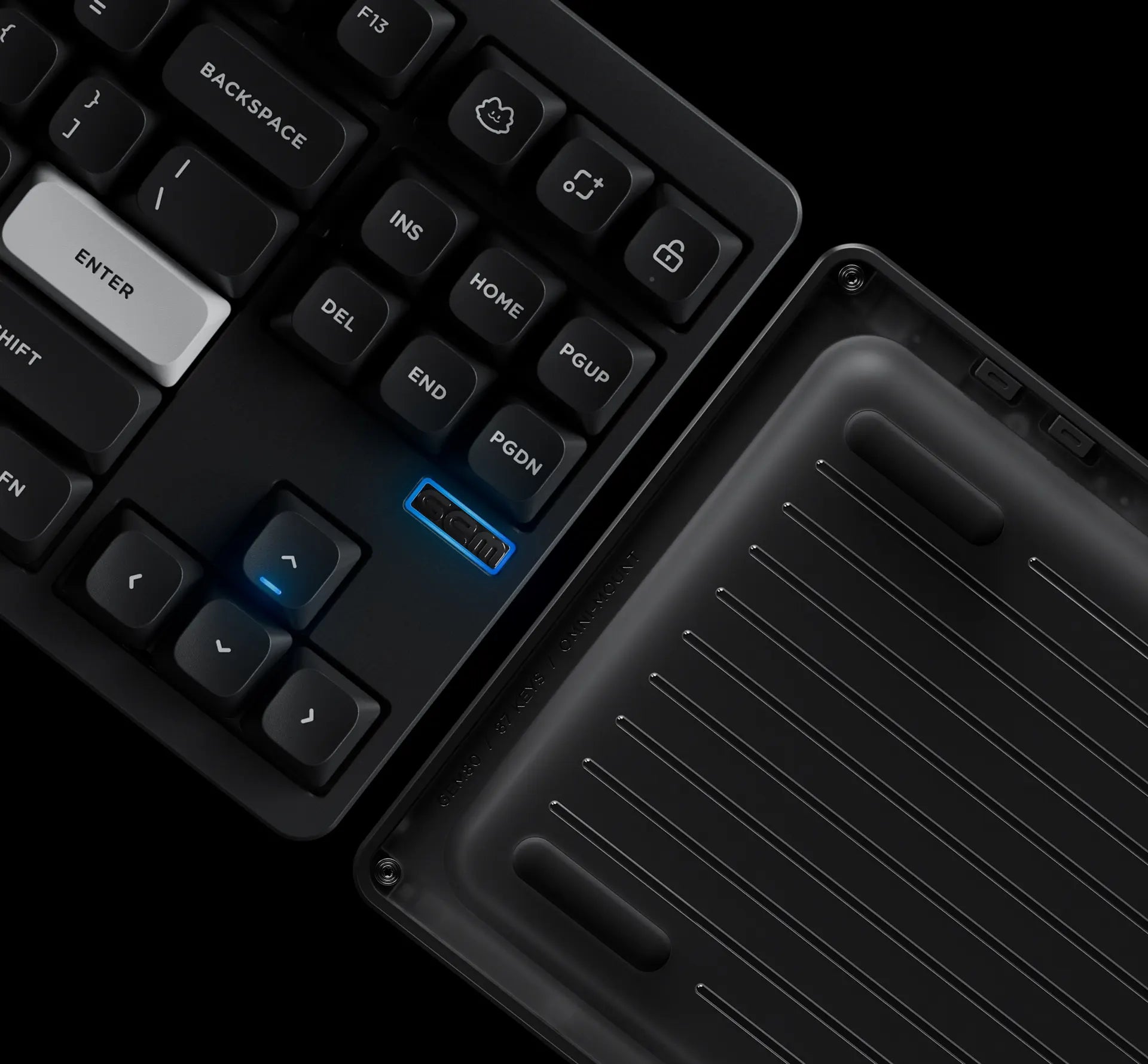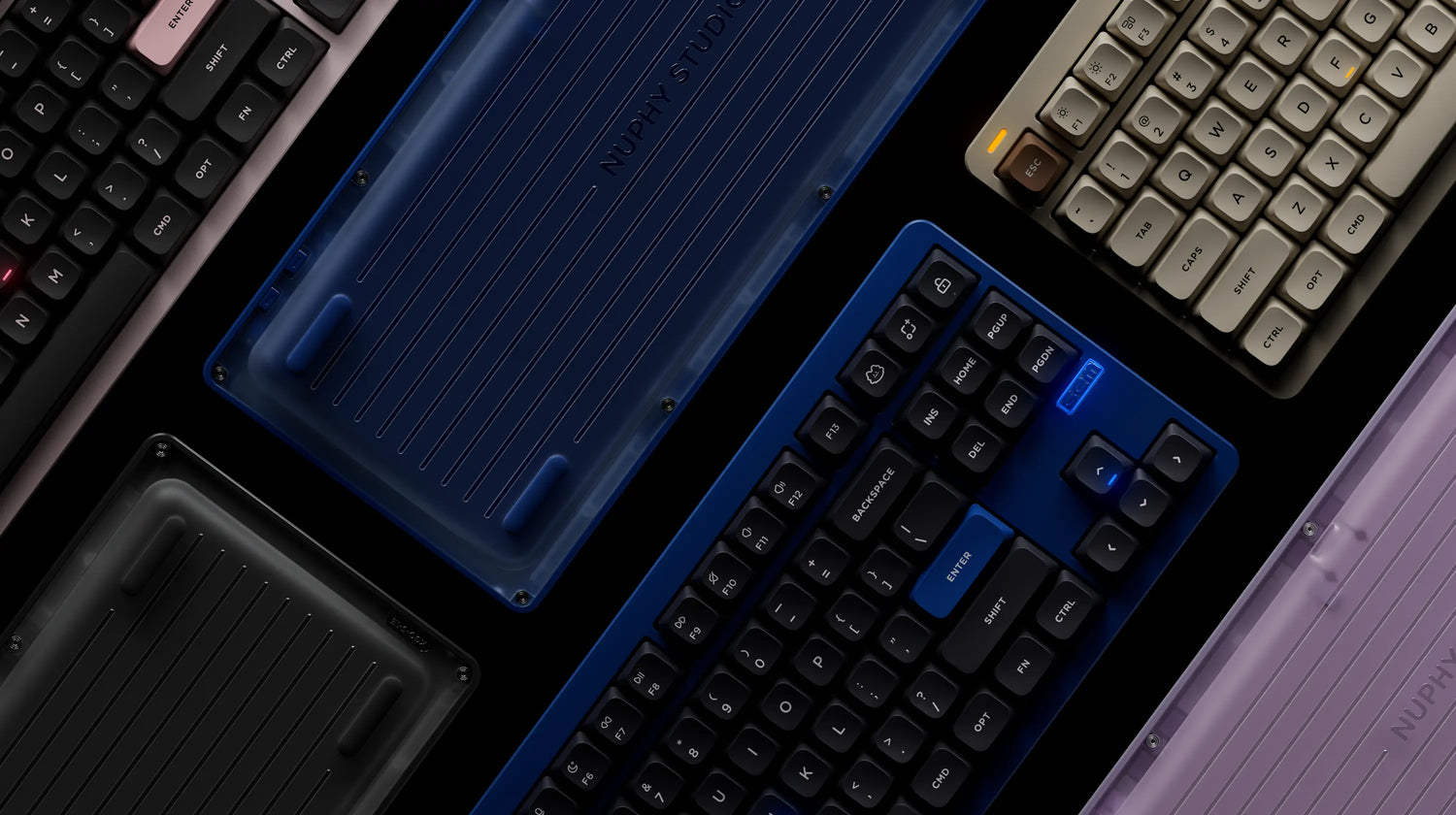
Gem80: A Darwinism of Innovation
January 4, 2024 | 4 min read | Words by NuPhy Studio
So far, about a dozen or so NuPhy keyboards have made it to the release. Dozens more, however, did not survive through our harsh selection process, or are still stuck in the pipeline despite years of resources and development going into them.
To come down the pipeline, a product has to meet, in general three criteria:
- It has to offer new features, capabilities, values to our users. In short, being innovative.
- It has to be competitive all around, with no significant shortcoming.
- Out of all products in development it has to be the best at what it aims to do.
Gem80, as a project to build our first custom keyboard, got off to an early start. Early NuPhy users will remember TES68, our first switch tester, co-developed with CIY and released way back in Sep 2021, which was also roughly when the ideation of the custom keyboard began, at the time without a codename. The development cycle of Gem80, however has been lengthy and arduous, as we seek to overcome the major hurdles of complexity inherent to the design of a custom keyboard, which is even more than what we had to deal with during Air75 V2’s designing in terms of balances and trade-offs. Specifically, there are four major conflicts between requirements arising from the need to satisfy criterion No. 2 that need to be resolved.capabilities, values to our users. In short, being innovative.
- It has to be competitive all around, with no significant shortcoming.
- Out of all products in development it has to be the best at what it aims to do.
1. Between Good Wireless Reception and Sound Quality
As uncompromising as we are with the qualities of both, a point of reference was actually easy to find. Wireless engineering is mostly science, a complete aluminum cage will block the EM fields. Properly designed PC bottom therefore, will always be capable of better reception. Sound engineering meanwhile, has some elements of arts, through trials and errors and thinking outside of the box we may be able to arrive at a good sound solution with a PC bottom.
The metaphoric journey to reach it from the top, however, almost broke us. Starting with the top plate foam, invariably made from high COR poron as adopted by most custom keyboards, they lost most of the sound concentration when used with a PC bottom. Low COR poron foams, and non-standard expansion ratio IXPE switch pads were sourced, after a needle in a haystack search of the right materials from multiple suppliers, to regain us the sound concentration. Another challenge lurked further down were the cavities between the switch stems and the bottom silicone, which caused the sound to become high pitched and ‘fragile’. A bulk of the development cycle was spent to adjust the size of PCB foams before we were satisfied enough with the pitches to reach the final stage of sound optimization.
2. Between RGB Backlighting and Sound Quality
This one came as a surprise, after half a year of sound engineering Gem80 has produced a sound as premiere as there ever was on a PC bottom keyboard, yet still somewhat ‘plastic’. As it turned out, the RGB LED beads, hardly ever present on other custom keyboards, were the culprits. The holes drilled on the PCB to place the beads, change the propagation of sound from the stems and cause it to sound ‘plastic’.
The solution also came as a somewhat surprise: we tried to take a page from Air75 V2’s sound mods by placing a sound dampener below the PCB, but built from an entirely different mysterious elastomer, And when the work is done, the result sounds like, to paraphrase Tao Te Ching, the keyboard did it all by itself. reception. Sound engineering meanwhile, has some elements of arts, through trials and errors and thinking outside of the box we may be able to arrive at a good sound solution with a PC bottom.
The metaphoric journey to reach it from the top, however, almost broke us. Starting with the top plate foam, invariably made from high COR poron as adopted by most custom keyboards, they lost most of the sound concentration when used with a PC bottom. Low COR poron foams, and non-standard expansion ratio IXPE switch pads were sourced, after a needle in a haystack search of the right materials from multiple suppliers, to regain us the sound concentration. Another challenge lurked further down were the cavities between the switch stems and the bottom silicone, which caused the sound to become high pitched and ‘fragile’. A bulk of the development cycle was spent to adjust the size of PCB foams before we were satisfied enough with the pitches to reach the final stage of sound optimization.
3. The Conflict between Gasket and Top Mount
Despite the name, we are not trying to start a flame war here. We have found out long ago that the answer to all custom keyboard problems is always-more customizability. With the NuPhy Omni-Mount kit that comes with every Gem80 keyboard, you are free to configure your keyboard to one of the 4 mounting styles and try out all 6 kinds of distinctive type feel they provide, or stick with one-Top is still the way to go for FPS gamers right? Or are we out of the loop again?
4. Between QMK Firmware and Wireless Performance
This one seems like a done deal, but in the 4 months between the releases of Air75 V2 and Gem80, we have pushed the envelope of our wireless latency by a few tens of percents and further reduced the intra-MCU delays. And have I talked about how amazing our PC bottom case is at improving wireless reception?
Safety & Peace of Mind
In response to the increasingly complicated and diverse charging landscape for keyboards, we have done a total review and rethinking of the way electronics are designed and protected in Gem80.
On-board over-voltage protection(OVP) and LDO low-voltage drop-out regulator ICs are introduced, which protect the MCU/RF chips and the battery against 9V/12/14V input supply voltages from protocol-noncompliant chargers. In combination with the battery’s own built-in protection circuit, the ICs are also helpful in improving its life span. Electrostatics protection is also present on the PCB, in the form of an ESD circuit which allows safe discharging and greater comfort and safety in use.
Challenge Accepted, Spirits Shared
If there is one thing we love and share with the custom keyboard community above anything else, it is the relentless pursuit to get the most out of the hardwares and in the process, devising creative solutions.
Gem80, as our first custom keyboard, is a work, we hope, to be examined not only for how well we can build a custom keyboard, but also for how much NuPhy-ness we can put into it.

